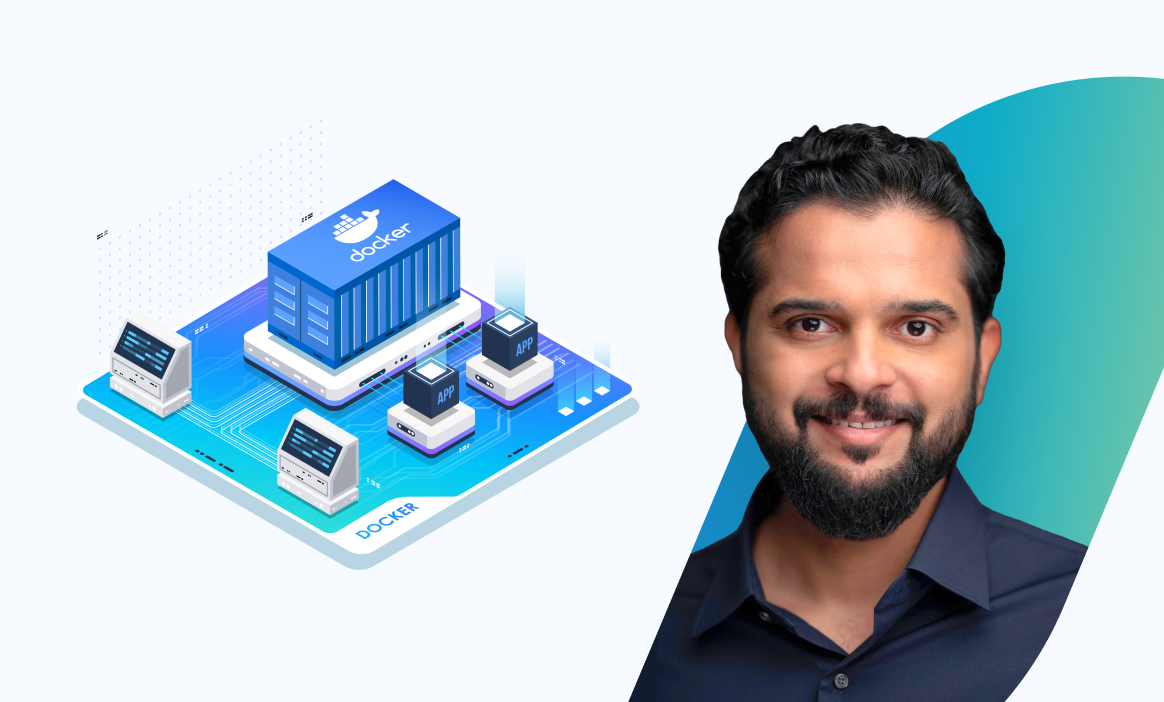Checklist for Cloud Migration: A Complete Guide for 2023
Gartner® forecasts that worldwide public cloud end-user spending will reach$600 billion in 2023. While cloud migration offers a range of benefits, and its popularity has continued to grow very fast, it also presents some challenges that businesses need to be aware of. One potential challenge is the complexity of the migration process, which can require significant planning and coordination.
In this blog, we’ll lay out the best practices to follow when implementing cloud migration. We’ll also explore the benefits of cloud computing and things to consider when implementing it.
What is Cloud Computing?
Cloud computing is a technology that allows individuals and businesses to store, access, and manage data and applications over the Internet instead of on a physical hard drive or local server. It has become a very popular solution for companies looking to reduce IT costs and improve their overall business performance.
Challenges of On-premise Computing
There are many reasons why companies are choosing to shift from the traditional computing methodology that involves relying on on-premise servers.
One of the biggest challenges of on-premise computing is the cost of maintaining and upgrading hardware. This can be a significant financial burden for businesses, especially small and medium-sized ones.
Another challenge is the need for qualified IT staff to manage and maintain the infrastructure. This requires a significant investment in training and hiring the right people.
Additionally, on-premise computing can be vulnerable to security threats, such as hacking and data breaches, resulting in significant financial loss and reputational damage.
Finally, on-premise computing can be limiting in terms of scalability and flexibility, as the capacity of their physical hardware restricts businesses. Despite these challenges, many businesses continue to rely on on-premise computing because of the control and customization it offers.
A striking example of the progressive trend of migrating its services to the cloud is the Swedish bank SEB. In 2019, it announced the move to a digital cloud data platform for basic banking. This helped the bank save operating costs and provide customers with personalized digital services.
Benefits of migrating to the Cloud
Below are some of the benefits companies that successfully migrate to the cloud enjoy:
- Economic efficiency. There are no capital costs, and operating costs are more optimized; payment is only made for the resources used. Companies can easily scale their resources up or down based on their changing needs without worrying about investing in additional hardware or infrastructure.
- Fast implementation. A completely ready-to-use service is provided within one working day. You can also spin up servers, databases, and other instances in just a few minutes.
- Over 99.9% uptime. High level of service availability and continuity of critical IT processes.
- Data safety. The ability to recover data of any period in case of their deletion in the office.
- Safety. Effective information protection tools, round-the-clock monitoring, quick response to incidents, and protection of confidential data from leaks.
How to Approach Cloud Migration
For small and medium-sized businesses, a complete migration of the IT infrastructure is easy since their infrastructure is quite simple. Large businesses, on the other hand, have a complex IT infrastructure and should use the partial migration option. This is a sequential and gradual transfer of services with the obligatory use of a migration roadmap.
For a successful migration, you should follow a pattern that includes developing a plan, deploying infrastructure in the cloud, migrating data, testing infrastructure, and starting services. Each stage involves the solution of both technical and organizational issues.
Cloud Migration Checklist
When migrating to the cloud, it's important to make sure you have a thorough checklist in place to ensure a smooth and successful transition. Here are some key items to consider:
1. Goals and Objectives
Define what you are hoping to achieve by moving to the cloud. This is important in defining the type of cloud you’ll need. For instance, you need more computing resources if you hope to achieve faster responses. If speed is less of a priority than security, you’ll need to introduce extra security mechanisms such as vaults and API gateways.
2. Assess your current infrastructure and applications
This determines what needs to be migrated and what can be left behind. This will help in ensuring that you create a lean cloud infrastructure. For instance, you may have redundant databases and APIs that are no longer being used; not migrating them saves on cost and increases data security.
3. Cloud provider evaluation
Choose a cloud provider and services that best fit your needs and budget. Among the leading contenders, Google Cloud, AWS, and Azure offer distinct features and strengths. GCP excels in machine learning and data analytics, AWS offers extensive services and scalability, while Azure emphasizes seamless integration with Microsoft products and hybrid cloud solutions.
4. Migration Plan
Develop a migration plan that outlines the steps and timeline for the transition, including any testing and validation. It should contain information about the services transferred to the cloud at all stages of the transition, with the possibility of verification after each step. It will allow you to control all the steps taken.
5. Team preparation
Prepare your team for the migration and ensure everyone is trained on the new cloud environment. Ultimately, the goal is to make the transition to the cloud as smooth and stress-free as possible for everyone involved. With the right preparation and support, teams adapt quickly and continue delivering without negatively impacting the bottom line.
6. Backup and Recovery
Develop a backup and disaster recovery plan to ensure business continuity in the event of any issues. A backup plan ensures that data is regularly saved and stored off-site, while a disaster recovery plan outlines the steps to be taken during a disruption. With these plans, companies can minimize downtime, reduce data loss, and maintain business continuity.
7. Continuous monitoring
Research and decide how you’ll monitor and optimize your cloud environment to ensure it continues to meet your business needs and goals. Regular monitoring allows for the timely detection of anomalies which can be addressed promptly to prevent system failures. By continuously monitoring, you can also identify areas for improvement and make necessary adjustments to optimize the system's performance.
8. Data migration
Once the above steps have been completed, you can proceed with the migration process following the above strategy. If the infrastructure to be transferred is complex and extensive, you should move in stages. If the migration of some services cannot be split, a full migration is the only migration option.
What Are the Mistakes During the Cloud Migration Process?
Why step on a rake that someone has already stepped on before you? Here are three mistakes that you should avoid when migrating to the cloud.
Mistake 1. Lack of application dependency scheme
When migrating, the pattern of dependencies between applications and the infrastructure should be given special attention. If certain applications use the same database, then you need to work out a mechanism for combined movement to the cloud. If this is not done, then the application may not work correctly.
This is where technologies such as containerization can help. For instance, you can use a tool such as Docker to create images of your applications and their dependencies.
Check out our FREE Docker course to learn more about images and containers from video lectures and hands-on labs.

Mistake 2. Lack of migration plan
The plan allows you to prescribe each stage of the move, eliminating chaotic actions and rash steps. Analyzing the situation and catching mistakes early will save time and achieve the desired results. We recommend using the Kubernetes platform to deploy and scale applications in containers. It also supports major containerization technologies, including Docker.
You should also adopt Infrastructure as Code (IaC) methodologies such as GitOps to make it easier to manage your infrastructure. This can be done by using tools such as Terraform, Ansible, Puppet, or Chef. To learn more about IaC, check out our IaC Learning Path.
Mistake 3. Running migration without preliminary tests
Before migrating to the cloud, choose a reliable and trusted hosting provider. After choosing a provider, request test access to the cloud platform and work through the migration processes. Firstly move the non-critical service to the cloud, check how everything works, and move on to the next service. Such consistent activities will yield good results.
The Role of a Cloud Engineer When Migrating to the Cloud

Let's start by knowing what a Cloud Engineer does.
What is a Cloud Engineer?
A cloud engineer is a professional who designs and oversees an organization's implementation of cloud computing solutions. They are responsible for creating cloud-based systems that are secure, scalable, and reliable. They ensure that an organization's cloud infrastructure meets its business requirements and follows best practices for cloud computing.
They work closely with other IT professionals to ensure that cloud-based applications and services are integrated seamlessly into the organization's overall technology strategy. With their expertise in cloud computing, cloud engineers play a critical role in helping organizations realize the benefits of cloud technology.
Whether it’s the initial migration or the third iteration, you need an in-house or freelance cloud engineer to transit to the cloud successfully. Of course, the success of migration to the cloud is influenced by the maturity of business processes in the company and the presence of a strategy for its development. A company does not need to possess competencies for a successful migration: it is enough to turn to a competent engineer with relevant experience.
Cloud solutions engineer is a position at the intersection of technical support and system administration. The engineer helps diagnose and fix most migration problems. He or she is also involved in the platform's operation: monitoring the operation of services, ensuring fault tolerance, and helping develop infrastructure.
A cloud solutions engineer advises the company’s development team on how to work with the platform it is migrating to. The average cloud engineer cost in Ukraine is $18,910; in the USA – $109,274, and in Germany – $78,978.
Check out Cloud Learning Path to see what you need to become a Cloud Engineer.
Conclusion
Migrating to the cloud can streamline operations, ultimately resulting in greater success for the company. For smooth migration, companies should engage the services of cloud engineers who can design the infrastructure to meet their business needs. Having a checklist will help maintain control over the migration process.
More on cloud computing:

